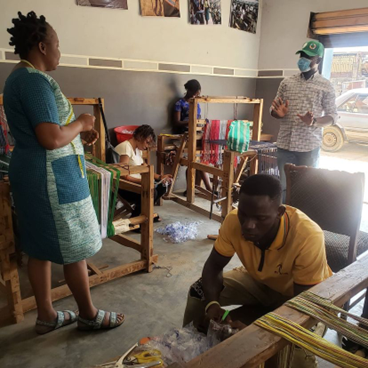Demystifying Intra-African Trade: The Role of Informal Cross Border Trade in the Era of AfCFTA
At Spurt! We are always looking to amplify solutions to critical and specific challenges in Sub-Saharan Africa. This week, we reviewed “Why the extent of intra-African trade is much greater than commonly believed — and what this means for the AfCFTA” by Andrew Mold and Samiha Chowdhury from Brookings Institution.
Unfortunately, there’s a flawed belief around the significance and scale of Intra-African trade in academic and policy-making circles. As a result, there’s always minimisation of the scale of Intra-African trade compared with other regional counterparts.
Fortunately, the situation on the ground couldn’t be further from the truth.Three errors drive the misconception on Intra-African trade:
First, the comparisons made to other regional blocks are frequently misleading and do not compare like-for-like.
Second, there is a distorted picture of intra-African trade by large-scale commodity exports to destinations outside the continent.
Third, there is a systematic failure to recognise the scale of informal cross-border trade.
Historical contexts and specific core strengths in natural resources from more prominent African economies like Nigeria, South Africa, and Egypt skew the scale of intra-African trade.
Moreover, these economies have capabilities that favour trade with other regions outside the continent.
Correcting the misconception on the scale and significance of intra-African trade in the policy and academic circles would require adopting policies that address the extensive barriers to informal cross-border trade across the continent.
In addition, national trade strategies need to prioritise Intra-African trade rather than expend political capital.
According to the Trade and Law Centre (Tralac), informal cross-border trade is the term used to define trade outside the formal channels. Informal cross-border trading (ICBT) is a critical source of livelihood in Sub-Saharan Africa.
In the Southern African Development Community (SADC), the estimation of ICBT is between 30 to 40% of the total intraregional trade. Within the Common Market for Eastern and Southern Africa (COMESA), ICBT stands at 40% of the total intraregional trade. Further to this, the volumes of ICBT varies country by country.
Landlocked countries and states with fragile and vulnerable communities tend to register a high rate of ICBT.
A great case in point for landlocked countries is Uganda and Rwanda. Between 2013 and 2015, informal exports represented 14.1% to 34.5% of Ugandan exports. According to Rwanda’s Ministry of Trade and Industry, in 2014, the country’s informal exports to Burundi, DRC, Tanzania and Uganda accounted for 59% of total exports to these countries.
There’s a domination of agricultural and livestock products in ICBT. The dominance of these items makes ICBT a critical part of food security in many places. With many households earning their source of livelihood through ICBT, it is a great contributor to poverty reduction and the advancement of community welfare. For vulnerable communities in fragile and conflict-affected states, ICBT acts as a lifeline giving these communities access to goods and services that relieve their social and economic recovery.
While the benefits of ICBT realised within communities that are primarily dependent on it are short term, a long-term solution lies in facilitating a switch among informal traders to the formal trading platform.Undoubtedly, the infrastructure, policies, procedures and behavioural dynamics at the borders grossly disadvantage small-scale ICBT traders.
The complex document requirements make the process a constant headache for the traders. In some instances, ICBT traders have paid 193% more than large scale traders to clear the small amounts of consignments crossing borders. Moreover, with the sustained global pandemic ravaging most economies, ICBT traders are on the receiving end of harsh operating conditions, leaving many households in a vulnerable state.
A multisector approach will be critical in addressing these problems. Regional outfits like Common Market for Eastern and Southern Africa (COMESA) have already addressed these challenges. COMESA has developed a Simplified Trade Regime (STR) that affords ICBT traders duty payment exemptions and simplified clearance procedures.An absence of reliable data on ICBT across Sub-saharan Africa has further accentuated the sidelining of this sector in the academic and policy world circles, as Mold and Chowdhury posit in their Brookings paper.
While there’s still a long way to go, some countries like Kenya, Uganda and Rwanda are already making progress in data collection. As these efforts continue to gain traction elsewhere across the continent, a shift in policymakers attitude around ICBT is likely to shift.
The ratification of AfCFTA across Sub-Saharan Africa is also set to bring a wave of progressive ICBT inclusion. The lifting of non-tariff barriers will significantly reduce the cost of ICBT and facilitate the free movement of cross-border traders with guaranteed tracking of progress through policy frameworks and data collection.



